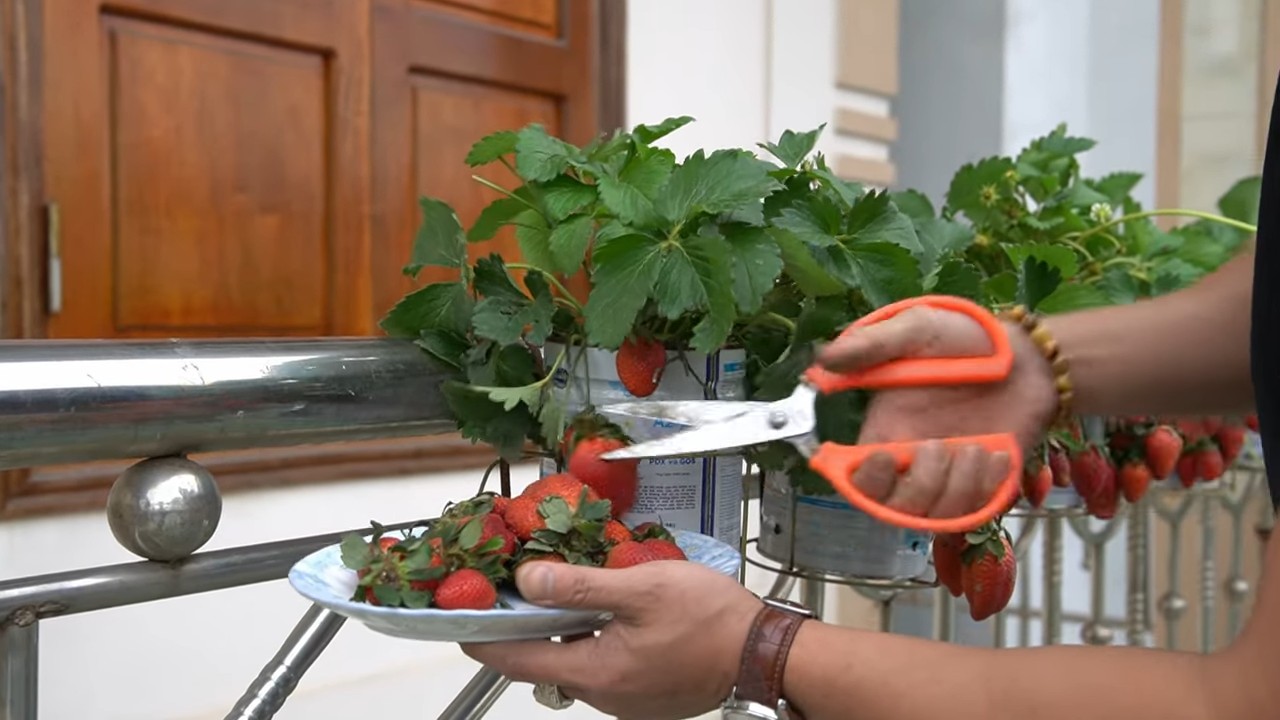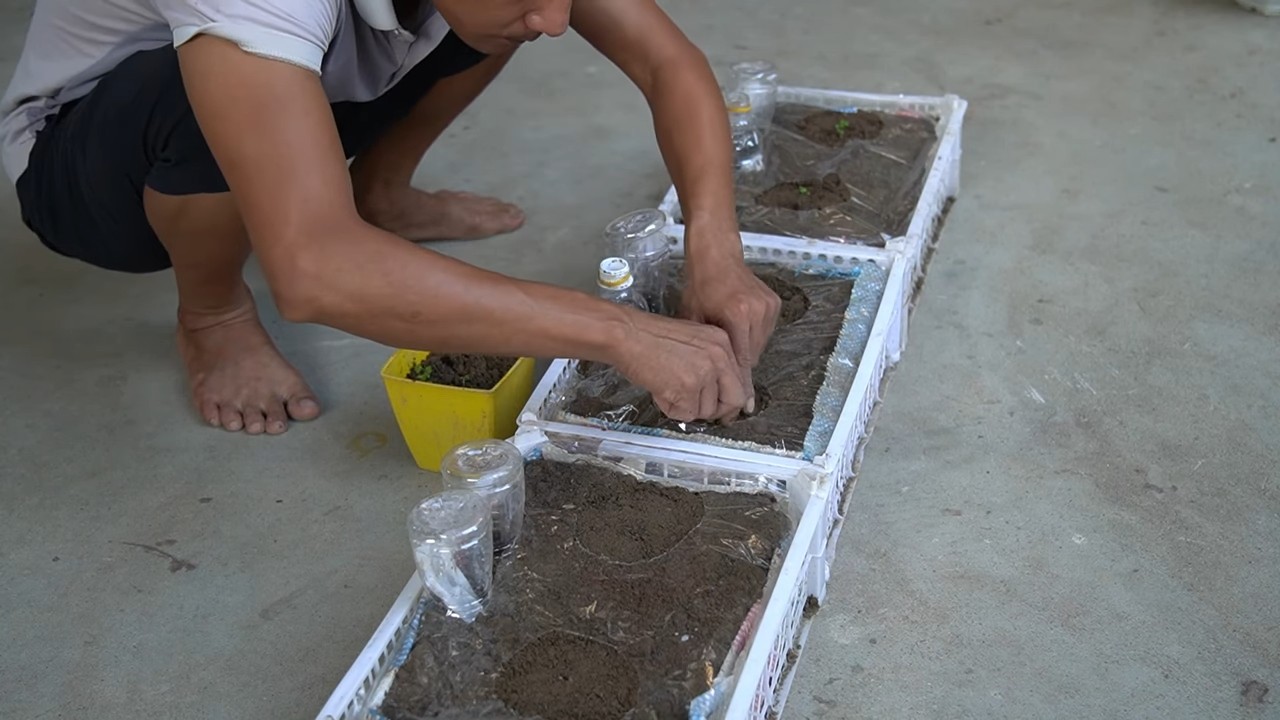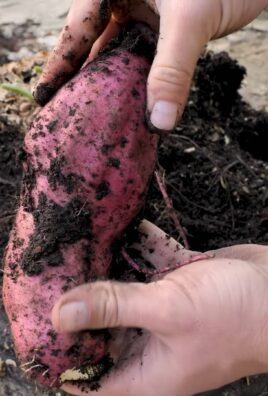Balcony strawberry growing – sounds like a dream, right? Imagine stepping onto your balcony and plucking a sun-ripened, juicy strawberry, bursting with flavor, all grown with your own two hands. Forget those bland, store-bought berries! This isn’t just a pipe dream; it’s an achievable reality, even if you’re short on space. For centuries, people have cultivated strawberries in various ways, from sprawling fields to carefully tended gardens. In some cultures, strawberries even symbolize perfection and righteousness. But let’s be honest, not everyone has a sprawling garden. That’s where the magic of DIY comes in!
This article is your ultimate guide to unlocking the secrets of successful balcony strawberry growing. We’ll delve into simple, yet effective DIY tricks and hacks that will transform your balcony into a thriving strawberry haven. Why do you need this? Because fresh, homegrown strawberries are simply better! Plus, gardening is incredibly therapeutic, offering a welcome escape from the stresses of daily life. We’ll show you how to choose the right containers, select the best strawberry varieties for balcony life, and master the art of watering and fertilizing. Get ready to impress your friends and family with your green thumb and enjoy a bounty of delicious strawberries all season long!

DIY Balcony Strawberry Paradise: A Step-by-Step Guide
Hey there, fellow balcony gardeners! Dreaming of fresh, juicy strawberries right outside your door? Well, you’ve come to the right place! I’m going to walk you through creating your very own strawberry haven on your balcony. It’s easier than you think, and the rewards are oh-so-sweet. Let’s get started!
Choosing Your Strawberry Growing Method
Before we dive into the nitty-gritty, let’s consider the best way to grow strawberries on your balcony. Space is often a premium, so we need to be smart about it. Here are a few popular options:
* Hanging Baskets: These are fantastic for maximizing vertical space. Strawberries cascade beautifully, creating a stunning visual display.
* Stacked Planters: These tiered planters are perfect for growing a lot of strawberries in a small footprint.
* Grow Bags: Lightweight and portable, grow bags are a versatile option.
* Traditional Pots: Classic and reliable, pots are a great choice if you have the space.
* Strawberry Towers: These are specifically designed for strawberries, with pockets for planting all around.
I personally love using a combination of hanging baskets and stacked planters. It adds visual interest and allows me to grow a good variety of strawberries. For this guide, I’ll focus on using traditional pots and hanging baskets, but the principles apply to most methods.
Gathering Your Supplies
Okay, time to gather our supplies! Here’s what you’ll need:
* Strawberry Plants: Choose everbearing or June-bearing varieties, depending on your preference. Everbearing produce fruit throughout the growing season, while June-bearing produce a large crop in June. I recommend a mix of both for a continuous harvest.
* Pots or Hanging Baskets: Make sure they have drainage holes! For pots, 8-12 inches in diameter is a good size. Hanging baskets should be at least 10 inches.
* Potting Mix: Use a high-quality potting mix specifically formulated for containers. Avoid garden soil, as it can compact and drain poorly.
* Slow-Release Fertilizer: This will provide your strawberries with a steady supply of nutrients.
* Watering Can or Hose: For, well, watering!
* Trowel: For planting.
* Gardening Gloves: To keep your hands clean.
* Hanging Basket Liner (for hanging baskets): Coco coir liners are a great natural option.
* Optional: Strawberry supports (to keep the fruit off the soil), bird netting (to protect your berries from hungry birds).
Planting Your Strawberries
Alright, let’s get our hands dirty! This is the fun part.
Planting in Pots
1. Prepare the Pot: If you’re using a new pot, give it a quick rinse. Fill the pot about two-thirds full with potting mix.
2. Remove the Strawberry Plant from its Container: Gently squeeze the sides of the container to loosen the plant. Carefully remove the plant, being mindful not to damage the roots.
3. Loosen the Roots: Gently tease apart the roots with your fingers. This encourages them to spread out and establish themselves in the new pot.
4. Plant the Strawberry Plant: Place the plant in the pot, making sure the crown (the point where the stems meet the roots) is level with the soil surface. Don’t bury the crown, as this can cause the plant to rot.
5. Fill with Potting Mix: Add more potting mix around the plant, gently firming it down. Leave about an inch of space between the soil surface and the rim of the pot.
6. Water Thoroughly: Water the plant deeply until water drains out of the drainage holes. This helps settle the soil and get the roots off to a good start.
7. Add Slow-Release Fertilizer: Sprinkle a slow-release fertilizer around the base of the plant, following the instructions on the package.
Planting in Hanging Baskets
1. Prepare the Hanging Basket: Line the basket with a coco coir liner or other suitable material. This helps retain moisture and prevents soil from washing out.
2. Fill with Potting Mix: Fill the basket about two-thirds full with potting mix.
3. Remove the Strawberry Plant from its Container: Same as with pots, gently squeeze the sides of the container to loosen the plant and carefully remove it.
4. Loosen the Roots: Gently tease apart the roots.
5. Plant the Strawberry Plant: Place the plant in the basket, ensuring the crown is level with the soil surface.
6. Fill with Potting Mix: Add more potting mix around the plant, gently firming it down.
7. Water Thoroughly: Water deeply until water drains out of the bottom of the basket.
8. Add Slow-Release Fertilizer: Sprinkle slow-release fertilizer around the base of the plant.
9. Hang the Basket: Hang your beautiful strawberry basket in a sunny spot on your balcony.
Caring for Your Strawberry Plants
Now that your strawberries are planted, it’s time to give them the TLC they need to thrive.
* Watering: Strawberries need consistent moisture, especially when they’re fruiting. Water deeply whenever the top inch of soil feels dry to the touch. Avoid overwatering, as this can lead to root rot.
* Sunlight: Strawberries need at least 6-8 hours of sunlight per day. Choose a sunny spot on your balcony for your plants.
* Fertilizing: In addition to the slow-release fertilizer, you can supplement with a liquid fertilizer every 2-3 weeks during the growing season. Use a fertilizer specifically formulated for fruits and vegetables.
* Pruning: Remove any dead or yellowing leaves. This helps prevent disease and encourages new growth.
* Pest Control: Keep an eye out for pests like aphids, slugs, and snails. Handpick them off the plants or use an organic pest control spray.
* Bird Protection: Birds love strawberries just as much as we do! Protect your berries with bird netting.
* Winter Care: In colder climates, you’ll need to protect your strawberry plants from frost. Move them to a sheltered location or cover them with a blanket or burlap.
Harvesting Your Strawberries
The moment we’ve all been waiting for! Harvesting your own homegrown strawberries is incredibly satisfying.
* When to Harvest: Strawberries are ready to harvest when they are fully red and slightly soft to the touch.
* How to Harvest: Gently twist or cut the strawberry from the plant, leaving a small piece of the stem attached.
* Enjoy! Eat your strawberries fresh, or use them in your favorite recipes.
Troubleshooting
Even with the best care, you might encounter a few challenges along the way. Here are some common problems and how to fix them:
* Yellowing Leaves: This could be a sign of overwatering, underwatering, or nutrient deficiency. Adjust your watering schedule and fertilize your plants.
* No Fruit: This could be due to lack of sunlight, poor pollination, or nutrient deficiency. Make sure your plants are getting enough sunlight, and consider hand-pollinating the flowers with a small brush.
* Small Fruit: This could be due to overcrowding, lack of water, or nutrient deficiency. Thin out the plants if they are overcrowded, and make sure they are getting enough water and fertilizer.
* Rotting Fruit: This could be due to overwatering or fungal disease. Improve drainage and avoid watering the foliage.
Choosing the Right Strawberry Variety
Selecting the right strawberry variety is crucial for balcony success. Here’s a breakdown to help you decide:
* Everbearing Strawberries: These varieties produce fruit throughout the growing season, offering a continuous harvest. They are ideal for balconies as they provide a steady supply of berries. Popular everbearing varieties include ‘Albion,’ ‘Seascape,’ and ‘Ozark Beauty.’
* June-Bearing Strawberries: These varieties produce a large crop of strawberries in June (or a similar timeframe depending on your climate). While the harvest is concentrated, the berries are often larger and more flavorful. ‘Honeoye’ and ‘Chandler’ are popular June-bearing choices.
* Day-Neutral Strawberries: Similar to everbearing, day-neutral varieties produce fruit throughout the growing season, regardless of day length. They are a good option for balconies with varying sunlight conditions. ‘Tristar’ and ‘Tribute’ are excellent day-neutral choices.
* Alpine Strawberries: These small, intensely flavored strawberries are perfect for containers. They are everbearing and produce tiny, cone-shaped berries. ‘Mignonette’ and ‘Yellow Wonder’ are popular alpine varieties.
I recommend planting a mix of everbearing and June-bearing varieties to enjoy a continuous harvest and experience the best

Conclusion
So, there you have it! Transforming your balcony into a thriving strawberry patch is not only achievable but also incredibly rewarding. This DIY balcony strawberry growing method offers a fantastic way to enjoy fresh, delicious strawberries right at your doorstep, regardless of how limited your space might be. Forget those bland, store-bought berries that lack the intense flavor and sweetness of homegrown fruit. With a little effort and the right setup, you can cultivate a continuous supply of juicy, sun-ripened strawberries throughout the growing season.
The beauty of this approach lies in its adaptability. You can tailor the setup to perfectly suit your balcony’s unique conditions and your personal preferences. Experiment with different container sizes and materials, from classic terracotta pots to repurposed buckets or even hanging baskets for a visually stunning display. Consider vertical gardening systems to maximize space and create a green oasis on your balcony.
Don’t be afraid to get creative with your strawberry varieties! While everbearing varieties are generally recommended for continuous harvests, explore different types to discover your favorites. Some varieties boast exceptional sweetness, while others offer a unique tartness that’s perfect for jams and desserts. Research which varieties thrive best in your local climate and choose accordingly.
Beyond the delicious fruit, growing strawberries on your balcony offers a host of other benefits. It’s a therapeutic activity that connects you with nature, reduces stress, and provides a sense of accomplishment. It’s also an eco-friendly way to reduce your carbon footprint by minimizing your reliance on commercially grown produce that travels long distances. Plus, it’s a fantastic opportunity to teach children about gardening and where their food comes from.
We’ve covered the essentials, from choosing the right containers and soil to providing adequate sunlight and water. Remember to pay close attention to your plants’ needs and adjust your care routine as necessary. Keep an eye out for pests and diseases, and take prompt action to prevent them from spreading. With a little patience and dedication, you’ll be rewarded with a bountiful harvest of sweet, juicy strawberries.
This DIY balcony strawberry growing project is more than just a gardening endeavor; it’s an investment in your well-being, your connection to nature, and your access to fresh, healthy food. So, what are you waiting for? Grab your gardening gloves, gather your supplies, and embark on this exciting journey. We are confident that you will find the experience incredibly fulfilling.
We encourage you to try this DIY balcony strawberry growing method and share your experiences with us! Post photos of your strawberry patch on social media using [Your Hashtag Here] and tell us about your successes, challenges, and favorite strawberry varieties. We’re eager to see your balcony transformations and learn from your experiences. Let’s create a community of balcony strawberry growers and inspire others to embrace the joys of homegrown fruit!
Frequently Asked Questions (FAQ)
What is the best type of strawberry to grow on a balcony?
Everbearing strawberries are generally the best choice for balcony gardens because they produce multiple harvests throughout the growing season. Day-neutral varieties are also a good option, as they are less sensitive to day length and will produce fruit consistently. Alpine strawberries are another excellent choice, especially if you prefer smaller, intensely flavored berries. Consider your local climate and choose varieties that are known to thrive in your region. Researching specific cultivars within each type will help you find the perfect match for your balcony’s conditions.
How much sunlight do balcony strawberries need?
Strawberries need at least 6-8 hours of direct sunlight per day to produce a good crop of fruit. If your balcony doesn’t receive that much sunlight, you can supplement with grow lights. Position your strawberry plants in the sunniest spot on your balcony and monitor their growth. If they appear leggy or produce few flowers, they may need more sunlight. Rotate the pots regularly to ensure even exposure to sunlight.
What kind of soil is best for growing strawberries in containers?
Use a well-draining potting mix specifically formulated for containers. Avoid using garden soil, as it can become compacted in containers and restrict root growth. A good potting mix will retain moisture while allowing excess water to drain away, preventing root rot. You can also amend the potting mix with compost or other organic matter to improve its fertility and drainage. Consider adding perlite or vermiculite to further enhance drainage.
How often should I water my balcony strawberry plants?
Water your strawberry plants regularly, especially during hot, dry weather. Check the soil moisture daily and water when the top inch feels dry to the touch. Avoid overwatering, as this can lead to root rot. Water deeply, allowing the water to drain out of the bottom of the container. Mulching around the plants can help retain moisture and suppress weeds. Adjust your watering schedule based on the weather conditions and the size of your containers.
How do I fertilize my balcony strawberry plants?
Fertilize your strawberry plants every 2-4 weeks with a balanced fertilizer specifically formulated for fruits and vegetables. Follow the instructions on the fertilizer package carefully. Avoid over-fertilizing, as this can burn the roots. You can also use organic fertilizers, such as compost tea or fish emulsion. Apply fertilizer after watering to prevent root burn. Consider using a slow-release fertilizer at planting time to provide a steady supply of nutrients throughout the growing season.
How do I protect my balcony strawberries from pests and diseases?
Inspect your strawberry plants regularly for signs of pests and diseases. Common pests include aphids, spider mites, and slugs. Diseases include powdery mildew and gray mold. Treat infestations and diseases promptly with appropriate organic or chemical controls. Encourage beneficial insects, such as ladybugs and lacewings, to help control pests. Provide good air circulation around the plants to prevent fungal diseases. Remove any dead or diseased leaves promptly.
Can I grow strawberries on a balcony in winter?
In colder climates, you may need to protect your strawberry plants from frost and freezing temperatures. Move the containers to a sheltered location, such as a garage or shed, or cover them with a blanket or burlap. You can also mulch around the plants to insulate the roots. In milder climates, you may be able to leave the plants outdoors, but monitor them closely for signs of frost damage. Some varieties are more cold-hardy than others.
How do I harvest strawberries from my balcony garden?
Harvest strawberries when they are fully ripe and red. Gently twist the berry from the stem, leaving the green cap attached. Harvest regularly to encourage continued production. Ripe strawberries are delicate and should be handled with care. Store harvested strawberries in the refrigerator for up to a week.
What are some creative ways to use my balcony-grown strawberries?
The possibilities are endless! Enjoy them fresh, make strawberry jam, bake them into pies and cakes, or add them to smoothies and salads. You can also freeze strawberries for later use. Get creative and experiment with different recipes. Share your bounty with friends and neighbors.
How do I encourage more strawberry production on my balcony?
Consistent watering, adequate sunlight, regular fertilization, and prompt pest and disease control are all essential for maximizing strawberry production. Remove runners (the long stems that grow out from the plant) to encourage the plant to focus its energy on producing fruit. Pinch off any flowers that appear late in the season to encourage the plant to conserve energy for the following year. Consider adding companion plants, such as basil or marigolds, to deter pests and attract pollinators.





Leave a Comment